DESTINATION BILBAO
Spain
A city transformed
The much lauded rebirth of Bilbao represents an ambitious example of urban restructuring and revitalization on a grand scale. Once scorned as a city in crisis and incapable of competing globally, Bilbao was in need of a intensive and well executed strategy to attract new investment. Politicians, city planners, the business community along with a myriad of stakeholders knew that the city had an image problem on an order of magnitude. With the eyes of the world on their massive two decade effort Bilbao transitioned from a grey industrial city to a one of services, leisure, culture and tourism which, to this day, is referred to as the “Bilbao Effect”.
Leading the charge toward this monumental undertaking was the committee known as “Bilbao Ria 2000”. Tasked with bringing many disparate parties together to minimize fragmentation, the principles involved in Bilbao Ria 2000 needed to formulate a forward leaning regeneration strategy in order to be successful. Today the critics, and the world, have come to know how well the collective efforts of the Bilbao Ria 2000 paid off.
The time had come for us to see the changes for ourselves.
As we got to know the city over our two week stay it was easy to see the results of the revitalization campaign everywhere we went. Centuries old buildings stand in proud company with modern architecture and the once ecologically dead Nervión river that runs through Bilbao is now free of the decades old pollution that stemmed from the industries that created it.
Gone too are the nearly 850 acres of industrial wastelands that once defined metropolitan Bilbao. In their place are gleaming towers, a world class museum and numerous parks and green spaces accessible by a new state-of-the-art tram.
Restaurants, bars, cafes and galleries were teeming with locals and tourists alike and the vibe throughout the city was one of Basque pride at Bilbao’s renewed global popularity.,
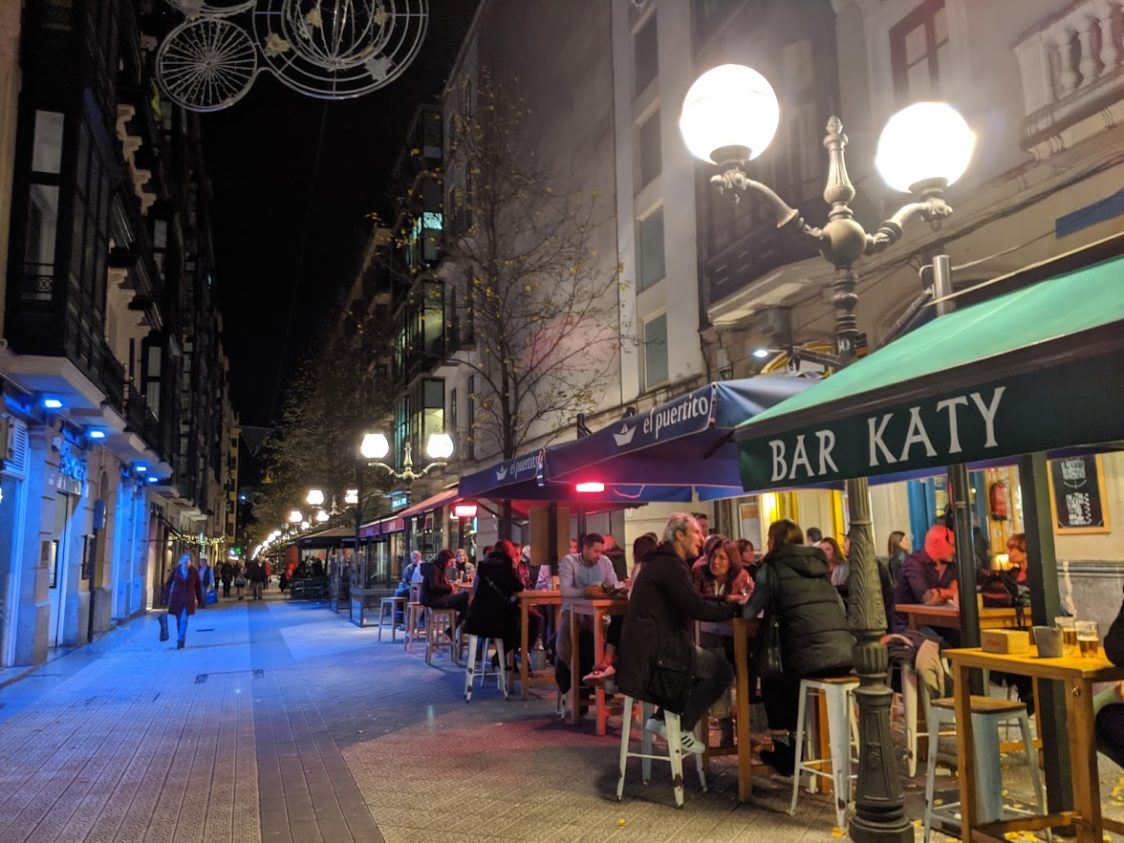
We did not need to be Bilbaíno’s to feel the energy that courses through the old and new town neighborhoods and choosing to walk most everywhere gave us the opportunity to witness for ourselves the amazing transformation of this once grey city on the river.
Today Bilbao is a cosmopolitan city and one of the world’s finest example of urban revitalization, yet it remains a city that, despite its increasingly modern design, never forgets its traditional heritage. This approach to urban renewal is destined to be studied and emulated by cities in decline for decades to come.
Architecture and bridges
There has always been debate as to whether architecture is art and there is little doubt that the debate will ever stop. What is also not in doubt is that world class architecture is capable of drawing crowds. Big crowds.
There is even a newly coined term for it…Architourism.
As seen through the lens of Balboa’s architectural renaissance it may be more useful to think of architecture, in this case modern architecture, as the manifestation of a city, and its people, willing to enthusiastically support, and embrace, the various man-made wonders that have sprung up since the mid to late nineties.
At the top of nearly everyone’s list would be the Guggenheim Museum, designed by Frank Gehry, arguably one of the world’s most famous living architects.
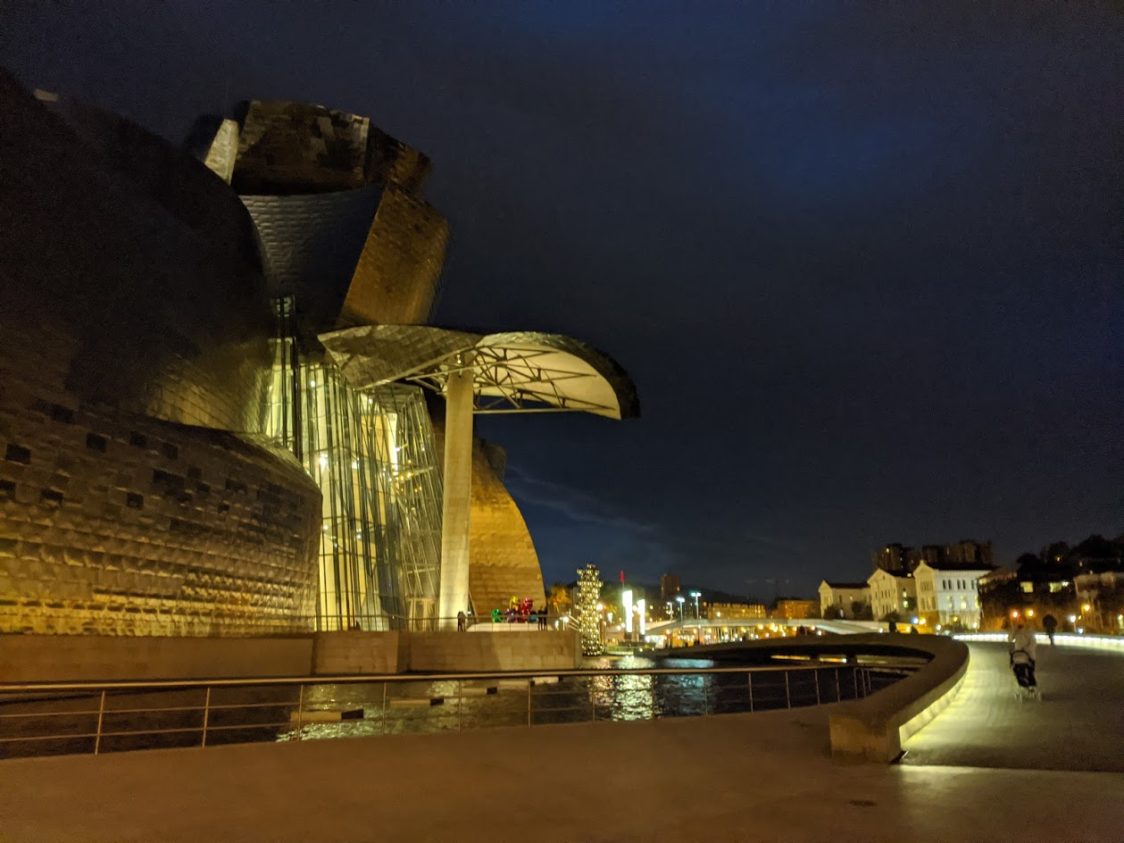
What the Guggenheim Museum did for Bilbao and its inhabitants was to inject some high octane enthusiasm into a city that desperately needed it. Some have argued that the museum and the effect it had on Bilbao was truly the beginning of the beginning of Balboa’s urban renaissance, architecturally, emotionally and civically.
As we walked around the city we witnessed dozens of buildings by such luminaries as Cesar Pelli and his renowned Iberdrola Tower, with its gleaming blue glass and unique three-sided structure. Additional works by Zaha Hadid, Norman Foster, Arata Isozaki, Rafael Moneo along with many others now grace Bilbao’s skyline and span the Nervión river that bisects the city.
Not to be overshadowed by all the glitz and glamor of the new buildings the Old Town area of Bilbao, known as Casco Viejo, is undergoing a renaissance of its own. This lively and dynamic medieval old quarter is a mixture of heritage buildings, narrow alleys, stores, cafes and countless pintxo bars, many of which are receiving a long overdue freshening up.
The landmark La Ribera Market market, looking for all the world like a massive cruise ship, is literally the anchor, as well as the entrance to the Old Town area. Built in 1929 the market has undergone several renovations in its long life, the most recent being completed in 2010. The spillover effect from the markets revival into Old Town was evident as we witnessed the constant hum of construction, the bird-like splatter of fresh plaster below dozens of scaffolds and the smell of fresh paint everywhere we walked.
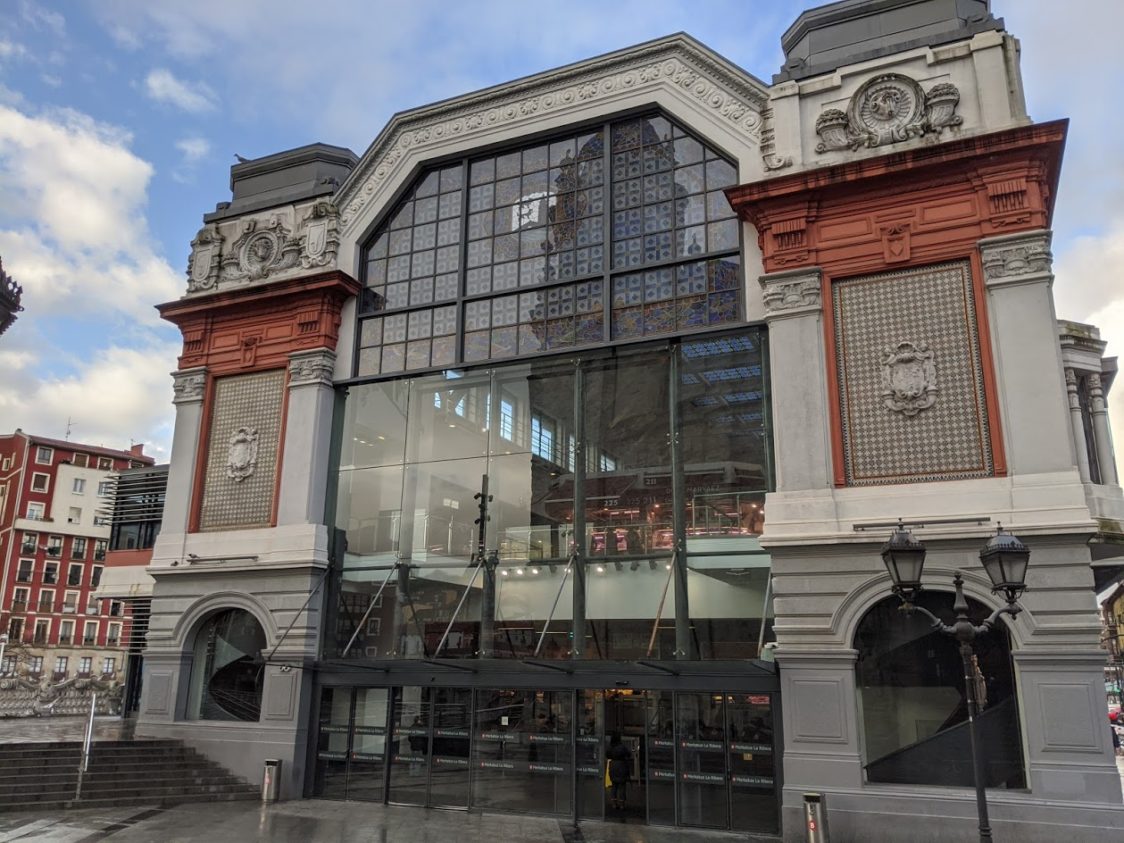
While criss-crossing the city over the Nervión river we marveled at the mix of modern and historic bridges, which to this day remain one of Bilbao’s greatest assets. Here was another example of how modern design sits shoulder-to-shoulder with existing bridges by complimenting them as opposed to overshadowing them.
From the Pedro Arrupe footbridge designed by engineer José Antonio Fernández Ordóñez (which looks like an enormous dragonfly) and the La Salve Bridge, whose official name is the “Prince and Princess of Spain Bridge” to the Zubizuri Footbridge, also known as the Calatrava Bridge after Santiago Calatrava, modern bridges have also played a substantial role in the rebirth of Bilbao.
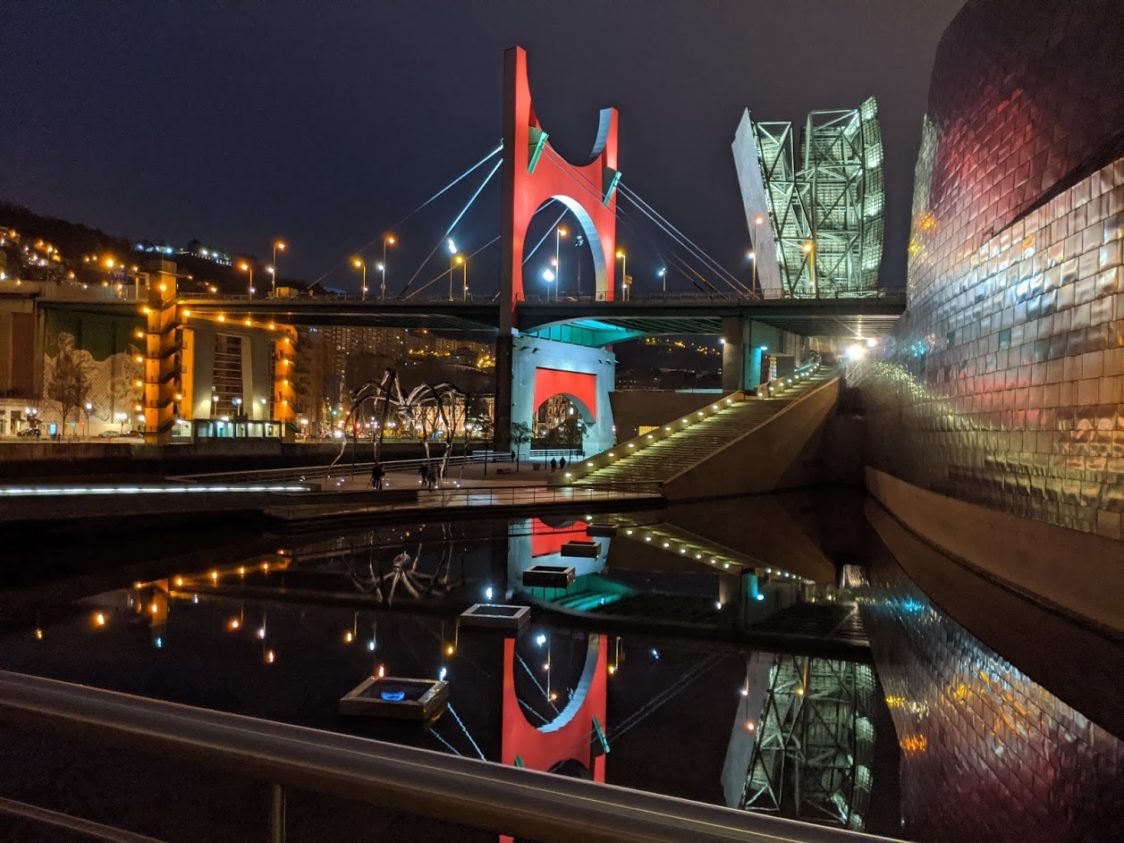
An epicureans promised land
From the smallest pintxo bar to the tightly knit network of Txokos to the Mercado de la Ribera, Bilbao is a temple to gastronomy. Depending on your taste, and budget, you can dine at a walk-up pintxo bar window or at any of Bilbao’s numerous Michelin rated restaurants.
Our first deep dive into the vast world of pintxo bar hopping came shortly after we checked into our charming flat. Several of the more popular neighborhoods lined with sidewalk cafes and long communal tables were a short walk across the river so our day without eating would soon be rewarded.
Rule number one when eating pintxos. Try not to think too hard or eat too many. It’s not dinner. That comes at a much later hour in Spain!
First, order your libation of choice then scan the selection and order a few that look appealing. Repeat as desired. It’s important to note that pintxos are not tapas. Instead they are the Basque country’s answer to Spain’s tapas. Typically they are small pieces of crusty bread, topped with various traditional ingredients such as a local cheese with figs, ham with fried green peppers, cod croquettes or pieces of Spanish omelette all held together by an oversized toothpick. These delightful little pre-dinner snacks have been served in Spain as far back as the 12th. century, although it wasn’t until the 19th century that they became common in bars.
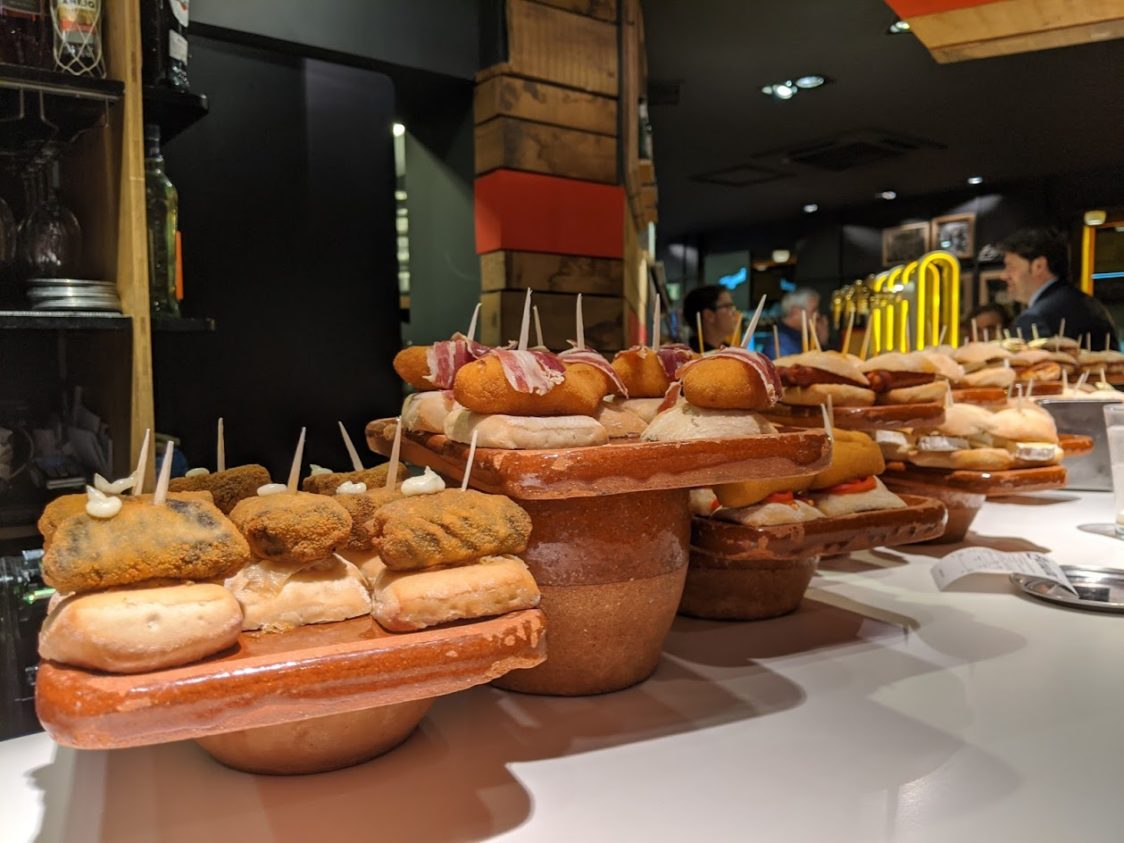
We were overjoyed to be having our own 21st. century experience as we ducked into three or four different bars to sample the wares. Seemingly, each bar has the same selection until you start to look more closely. The requisite jamon, cheese and tuna pintxos are on display in every bar yet there is a movement afoot among chefs and bartenders to create evermore artisanal versions of this classic stand up snack.
After a couple of days of searching out, sampling and enjoying the city’s numerous pintxo bars there came a moment of reckoning. It was time a for a real meal!
While strolling through the charming Casco Viejo neighborhood one afternoon we spotted a very intimate restaurant slightly removed from the hustle and bustle of the pintxo scene. Little did we know that we had stumbled upon the oldest bar in Bilbao, dating back to 1878 when it was originally called Colón. Now called Los Fueros after the street on which it resides, it is one of the more well respected, and difficult to get into, restaurants in Bilbao. Fortunately for us it was the “off season” for tourism so Ana was kind enough to reserve a table for us the following evening.
An actual sit down meal was a greatly appreciated break from the crowds and the noise associated with the pintxo bar scene. As we dined on some of Los Fueros’ signature dishes such as bloody mary shrimp cocktail, beet carpaccio and grilled white prawns, all of which were accompanied by a fantastic Albarino from the region we further realized why Bilbao is a global destination for food lovers.
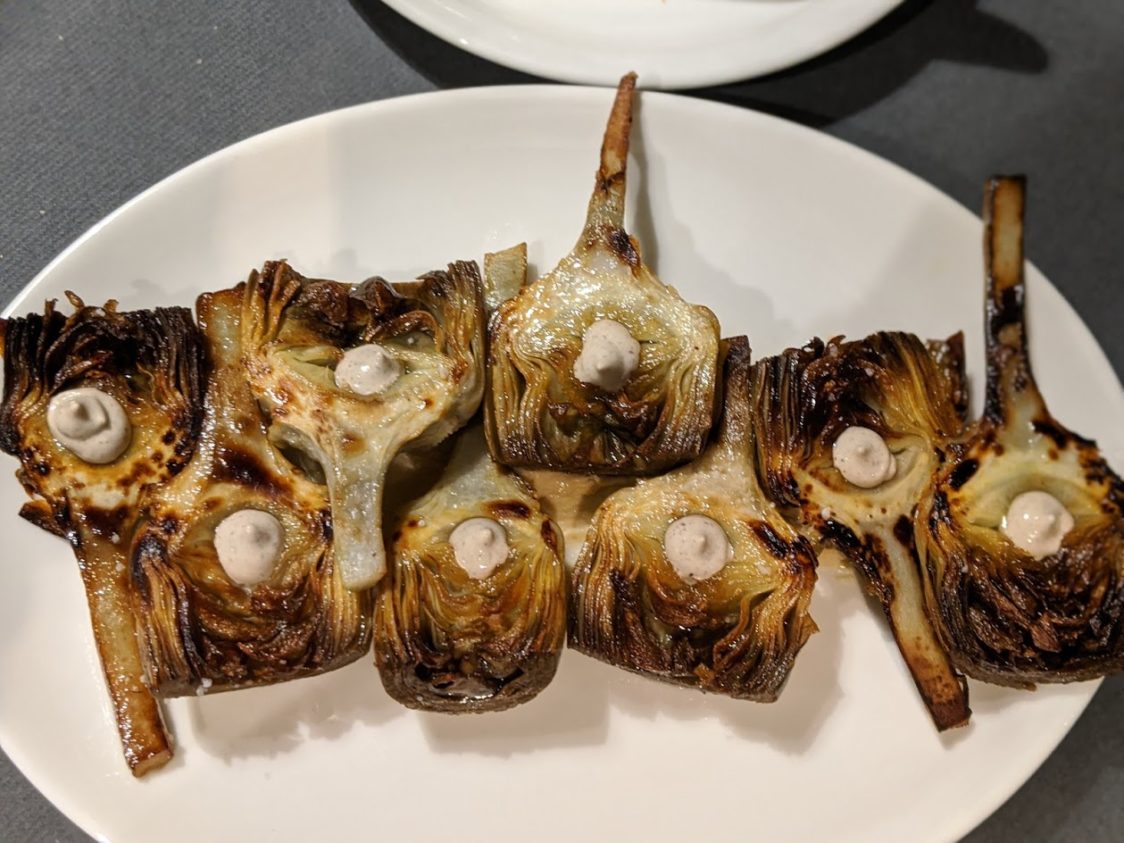
Most days we ate our breakfast at a local bakery/microbrew pub called Basquery or the Mercado de la Ribera, Bilbao’s centuries old covered market. At 110,000 square feet the Mercado de la Ribera was awarded the Guinness book distinction of the largest covered market in Europe. A modern day temple of food the market attracts locals as well as numerous chefs from some of Bilbao’s top restaurants along with the usual throngs of tourists. With numerous pintxo stands sprinkled throughout the market it is easy to enjoy breakfast or lunch while shopping for dinner! In our view, there is no better place to experience the flavours of Bilbao, and its people, than this grand marketplace.
One of our most memorable lunches was had at the Bistró Guggenheim Bilbao located in the Guggenheim Museum. With a second floor view of the we enjoyed one of the finest meals we have ever had in a museum restaurant. It is unusual for a museum restaurant to have food that is so closely linked to the local culture, yet prepared in an updated, avant-garde manner. It was so good that we returned several days later just to have lunch!
The remainder of our dinners during our time in Bilbao were had at home taking advantage of the abundance of fresh food found at the Mercado de la Ribera and a nearby cheese store called La Petite Fromage as well as the La Oka, an exceptional 30 year old deli favored by locals. Those three destinations were the culinary triangle of our dine-at-home meals.
The ancient Greek philosopher and sage Epicurus, the founder of Epicureanism, advocated living in such a way as to derive the maximum amount of pleasure possible during one’s lifetime. He also argued that pleasure was the chief good in life. For those living in, or visiting Bilbao and the Basque region in general, succumbing to that lofty advice is not a difficult endeavor.
The great outdoors
Bilbao is, without question a great walking city.
From the Casco Viejo neighborhood to the former Euskalduna shipyards, it it was easy for us to log our daily goal of 10,000 steps and still have plenty left to see the following day. With the Nervión river bisecting the city, and acting as Bilbao’s “main street”, it was the perfect compass to navigate our way around. Walking up one side and down the other for our first two days was a great way to get our bearings.
Heading away from the river on either side took us into old neighborhoods full of classic buildings, historic apartments and block after block of interesting restaurants, shops and plazas resplendent with beautiful fountains and surprises around every corner.
Several days into our stay we rode the Funicular de Artxanda, or the “funi” as the locals call it, to Mount Artxanda. Opened in 1915 the funi reaches the 825 foot summit in less than five minutes. Once there we enjoyed taking in the 360 degree views of the surrounding mountains and the city below. From this elevation we were better able to understand the layout of Bilbao as the various bridges, parks and architectural landmarks were easy to identify.
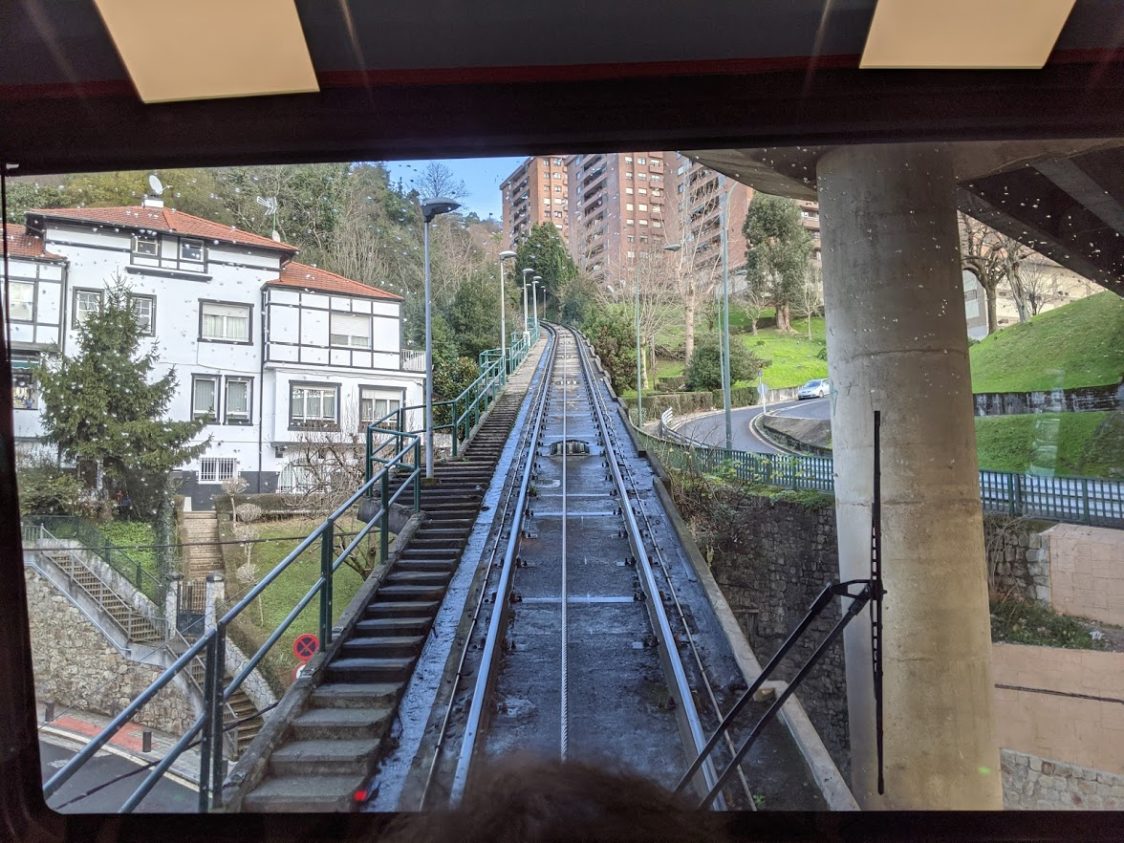
With Bilbao’s great transit system it’s easy to get out of the city to explore the nearby mountains or an afternoon along the waterfront on the Bay of Biscay.
On one such outing we took the 30 minute train ride from Bilbao to Portugalete then walked from the train station to the Bizkaia Bridge, popularly known as the Hanging Bridge. Technically, the Bizkaia Bridge is a suspension bridge that has a gondola hanging from it that travels from one side of the Nervion river to the opposite side. This arrangement allowed the actual bridge to be built very tall for the passage of ships while serving double duty as a passenger and vehicle ferry. If it were to be built today it would be considered a technical marvel. The fact that it was officially opened on July 28th. in 1893 is nothing short of amazing and is why it was placed it on the UNESCO list of world heritage monuments in 2006.
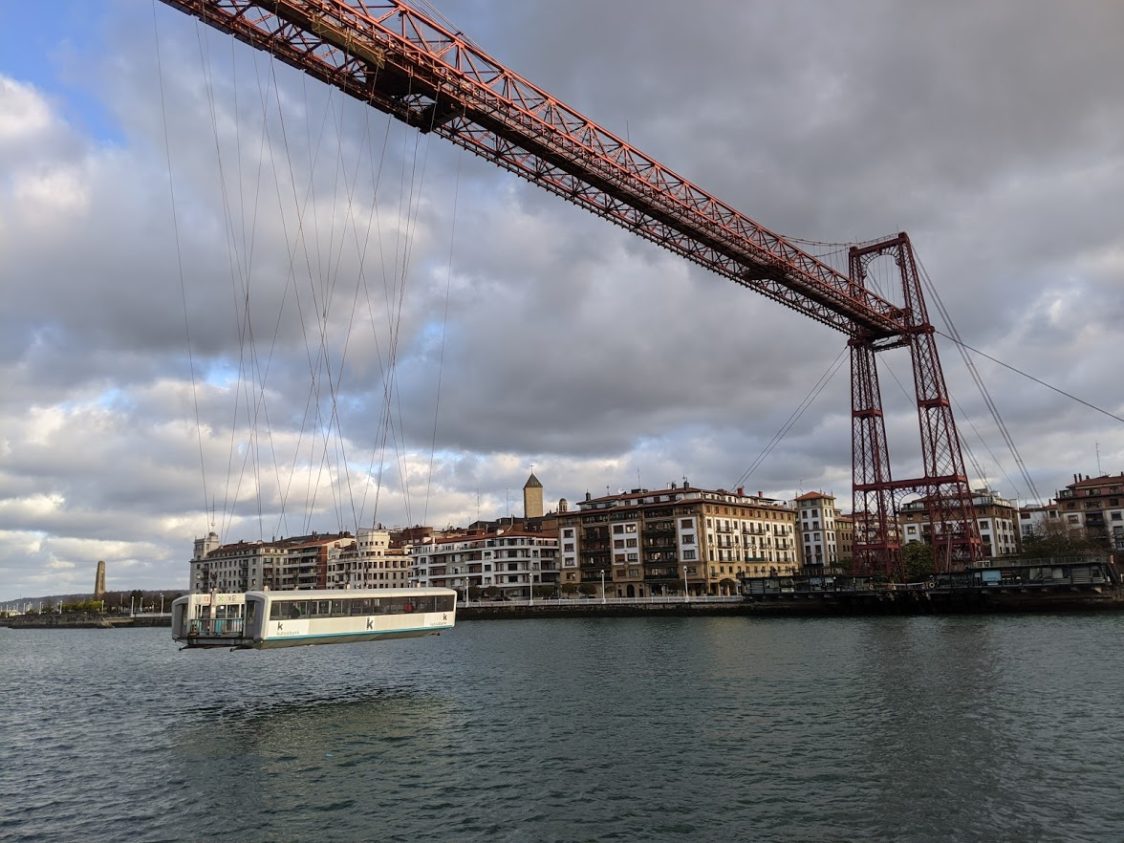
Once on the other side of the river we spent the morning and well into the afternoon walking along the 15 mile promenade facing the Bay of Biscay. As the promenade rises and spreads out over vast bluffs the views up and down the coast were spectacular. It was a crystal clear day and along the way we were able to view several of the original homes on the bay built by some of Bilbao, and Spain’s more prominent families.
Our search for a more rural adventure found us boarding a pre-dawn bus to the village of Orozco high in the mountains above Bilbao. Orozco, as well as the other villages that we passed through, are in a very privileged setting with mountains, forests and multiple rivers and streams. It was a gorgeous day and we were the only non-villagers on the trails. As we hiked from village to village we encountered the kindness of local people curious to know where we were from and how we wound up in their tiny corner of Spain. Basque hospitality was on full display that day as people waved, said hello and wished us well.
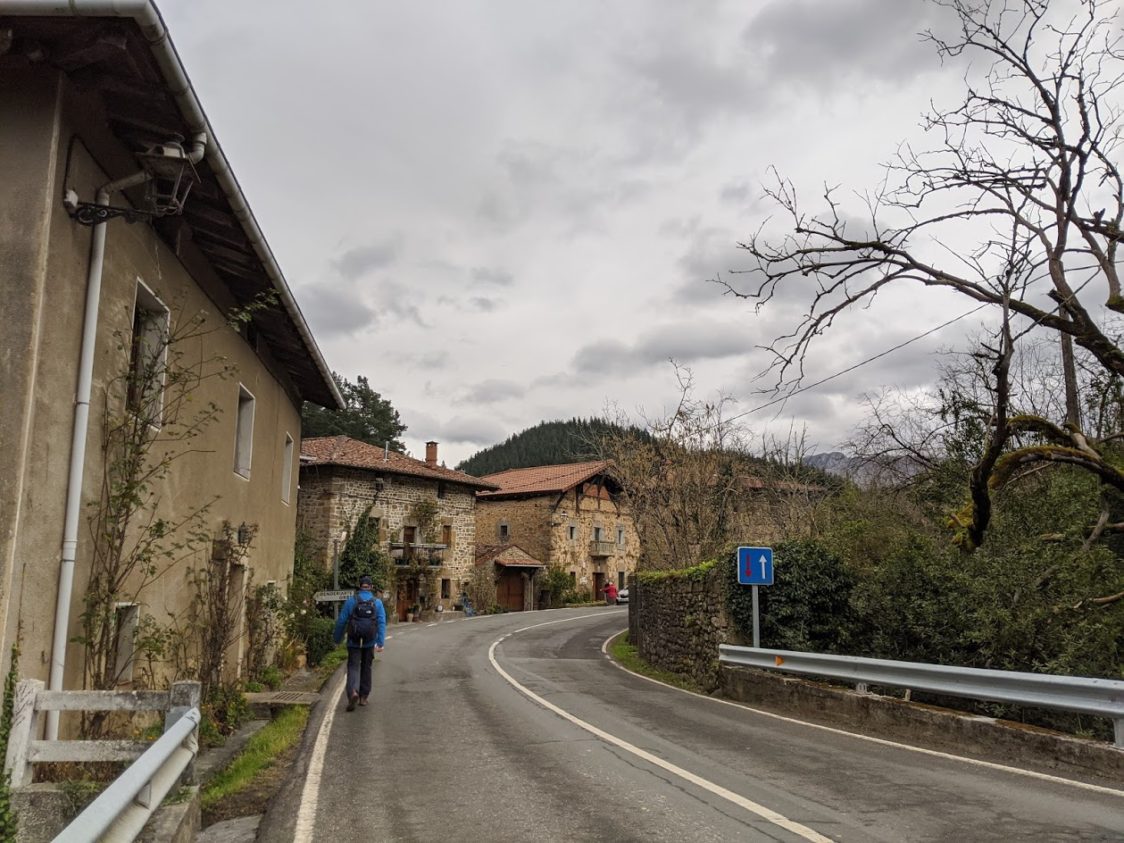
Our 13 days
Our time spent in Bilbao and the surrounding region was just the prolonged stay we had been looking for. It allowed us to fully experience this beautiful land with its mix of natural wonders, culture, and culinary traditions, along with the gregarious and friendly people of Bilbao and the Basque countryside.
The Basque region has it all, a beautiful coastline with sandy beaches, vast green mountains with storybook villages, the world renowned Rioja wine country and, to anchor it all, the vibrant city of Bilbao with its well earned reborn spirit. It did not take us long to fully appreciate the Basque approach to living, which loosely translates to as “life is to be lived”.
It is a mantra that they embrace with gusto and we found it to be highly contagious as we continued our travels through Spain!
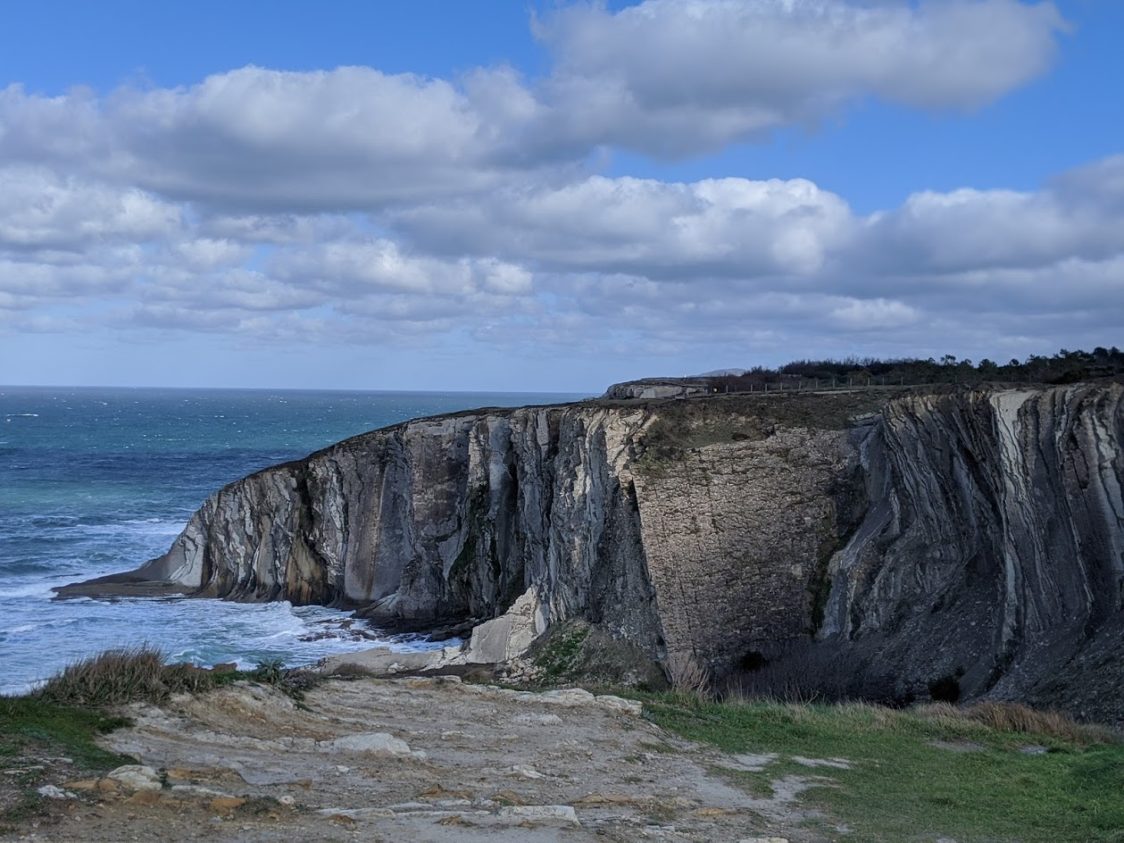
QUICK TRAVEL FACTS
Currency
Spain: Euro (EUR)
